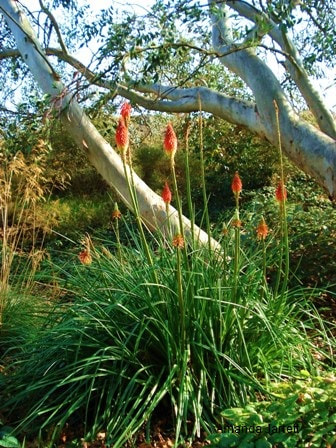Hybrid cultivars of Red hot poker are available, which have flowering spikes of pale yellow, ivory, apricot, orange and red that bloom in summer. All have long, sword-like basal leaves and tall, upright flowering spikes. It flowers from the bottom upward, and the bright orange flowers fade to yellowish green as they senesce, resulting in a two. From The Garden Forum: I'm in 4a. I've been reading that my Red Hot Pokers won't make it through our winter. Tell me if this is right. I'll cut the top of the plant off and dig up the rhizome.
Red hot poker plants are easy to grow in well-draining soil. If you wish to start plants by collecting seeds, here are a few tips on how to plant red hot poker seeds for a successful crop of 'torch lily' that will bloom for years. Click this article to learn more.
The first year these incredible birds came to the Kniphofia in the garden it was indeed a sight to behold. The Oriole is one of the most beautifully colored birds and just happens to be a perfect color match for the spiky Kniphofia flowers. This patch of Kniphofia is now in its sixth year and every year the Orioles visit. It is the only time they are seen here and this is the only plant they have been spotted visiting for any length of time. The nectar must be mighty tasty because the birds work relentlessly to sip from each flower tube. Usually there is never more than one Oriole in the patch at a time. This year though a young Oriole followed an adult into their Garden of Eden. And, there are times when the hummingbirds get pretty possessive of the nectar rich flowers, but no matter how much the little hummers buzz around they cannot run off the Orioles. Kniphofias bloom in early spring and it takes a few blooms before the Orioles show up.
Plant Hardiness Zone 6a

Red Hot Poker Plant Growing Zones
In the picture above, it is easy to see the grassy nature of the Kniphofia which adds extra texture and interest to the garden. This patch has self seeded so there are varying color patterns among the flowers but they are all in the yellow to orange range. The flowering spikes can reach 5 feet tall. The bloom right under the bird is shorter because it is newly emerging and smaller because it has not yet unfurled its flowers. New flower spikes continue to be produced for many months which lengthens the stay of the Oriole. There does not seem to be any advantage to removing spent flower stalks to encourage more bloom.